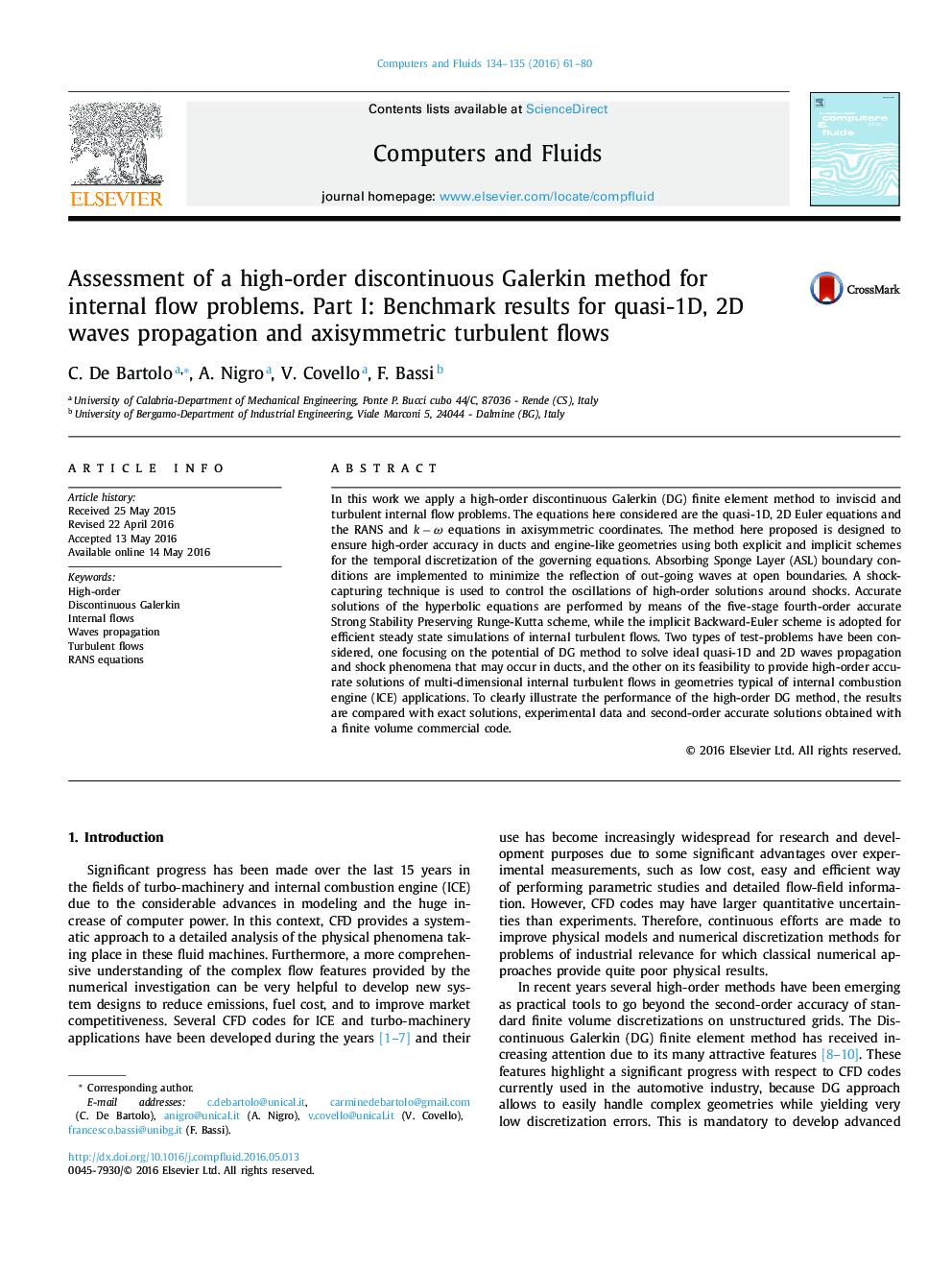| کد مقاله | کد نشریه | سال انتشار | مقاله انگلیسی | نسخه تمام متن |
|---|---|---|---|---|
| 768060 | 1462676 | 2016 | 20 صفحه PDF | دانلود رایگان |

• A high-order DG scheme has been applied to internal flow problems.
• High-order is effective for waves propagation in quasi-1D, 2D ducts on coarse grids.
• Quasi-1D waves propagation doesn’t require non-reflecting boundary conditions (NRBCs).
• Absorbing Sponge Layer BCs performed effectively for 2D waves propagation problems.
• DG scheme allows robust and high-order accurate RANS simulations of ICE flows.
In this work we apply a high-order discontinuous Galerkin (DG) finite element method to inviscid and turbulent internal flow problems. The equations here considered are the quasi-1D, 2D Euler equations and the RANS and k−ωk−ω equations in axisymmetric coordinates. The method here proposed is designed to ensure high-order accuracy in ducts and engine-like geometries using both explicit and implicit schemes for the temporal discretization of the governing equations. Absorbing Sponge Layer (ASL) boundary conditions are implemented to minimize the reflection of out-going waves at open boundaries. A shock-capturing technique is used to control the oscillations of high-order solutions around shocks. Accurate solutions of the hyperbolic equations are performed by means of the five-stage fourth-order accurate Strong Stability Preserving Runge-Kutta scheme, while the implicit Backward-Euler scheme is adopted for efficient steady state simulations of internal turbulent flows. Two types of test-problems have been considered, one focusing on the potential of DG method to solve ideal quasi-1D and 2D waves propagation and shock phenomena that may occur in ducts, and the other on its feasibility to provide high-order accurate solutions of multi-dimensional internal turbulent flows in geometries typical of internal combustion engine (ICE) applications. To clearly illustrate the performance of the high-order DG method, the results are compared with exact solutions, experimental data and second-order accurate solutions obtained with a finite volume commercial code.
Journal: Computers & Fluids - Volumes 134–135, 1 August 2016, Pages 61–80